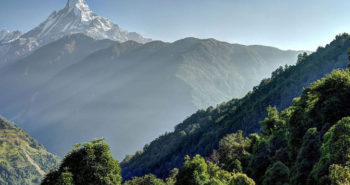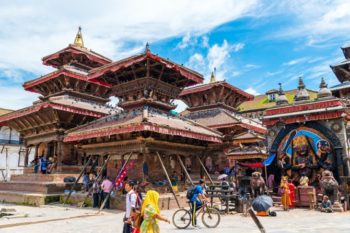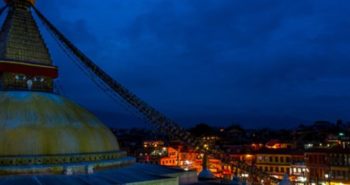Lukla Tenzing Hillary Airport
The Tenzing Hillary Airport in Lukla, Everest Region, has been named the most dangerous airport in the world by many authorities. But how dangerous is it?
History of Luka Airport
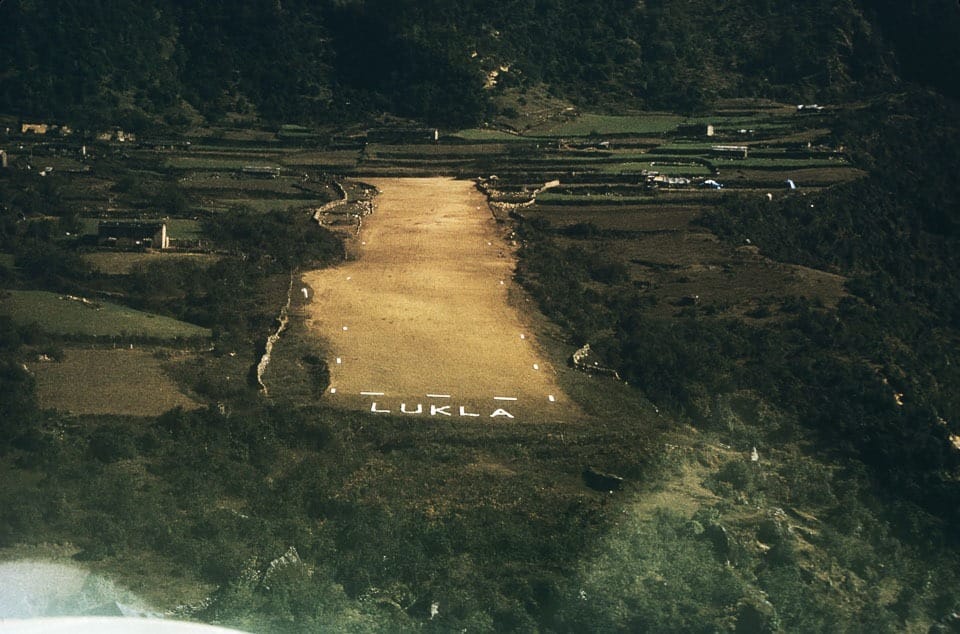
Early mountaineers had to journey from Kathmandu to Everest overland, adding many days to the long expedition weeks required to attempt to conquer the mountain. Good coming into the region also took the same long, arduous route as any products or people going out of the area.
After successfully summiting Everest along with his companion and guide, Tenzing Norgay, Edmund Hillary was so taken by the Sherpa people that he made it his responsibility to pay back to the people without whom he would not have succeeded in his quest.
Along with a school and hospital, Hillary was aware that the people suffered hardship because of the long journey required to be made to the Terai area and the capital of the country. His idea then was to build an airport that would aid people in their daily lives. Certainly, in 1964 when the airport was built, Hillary could not have imagined that one day it would bring in thousands of trekkers and mountaineers.
Although Hillary had hoped to build the airport on flat land, that limited amount of land was already used for farming, and the farmers were not keen to give up their land for something as modern and unheard of as an airport. Finally, a runway was constructed on high, narrow land between the mountains. Finally paved in 2001, the airport was renamed the Hillary Tenzing Airport in 2008 after Hillary died in the same year and almost two decades after the death of Tenzing Norgay.
The Lukla Airport Today
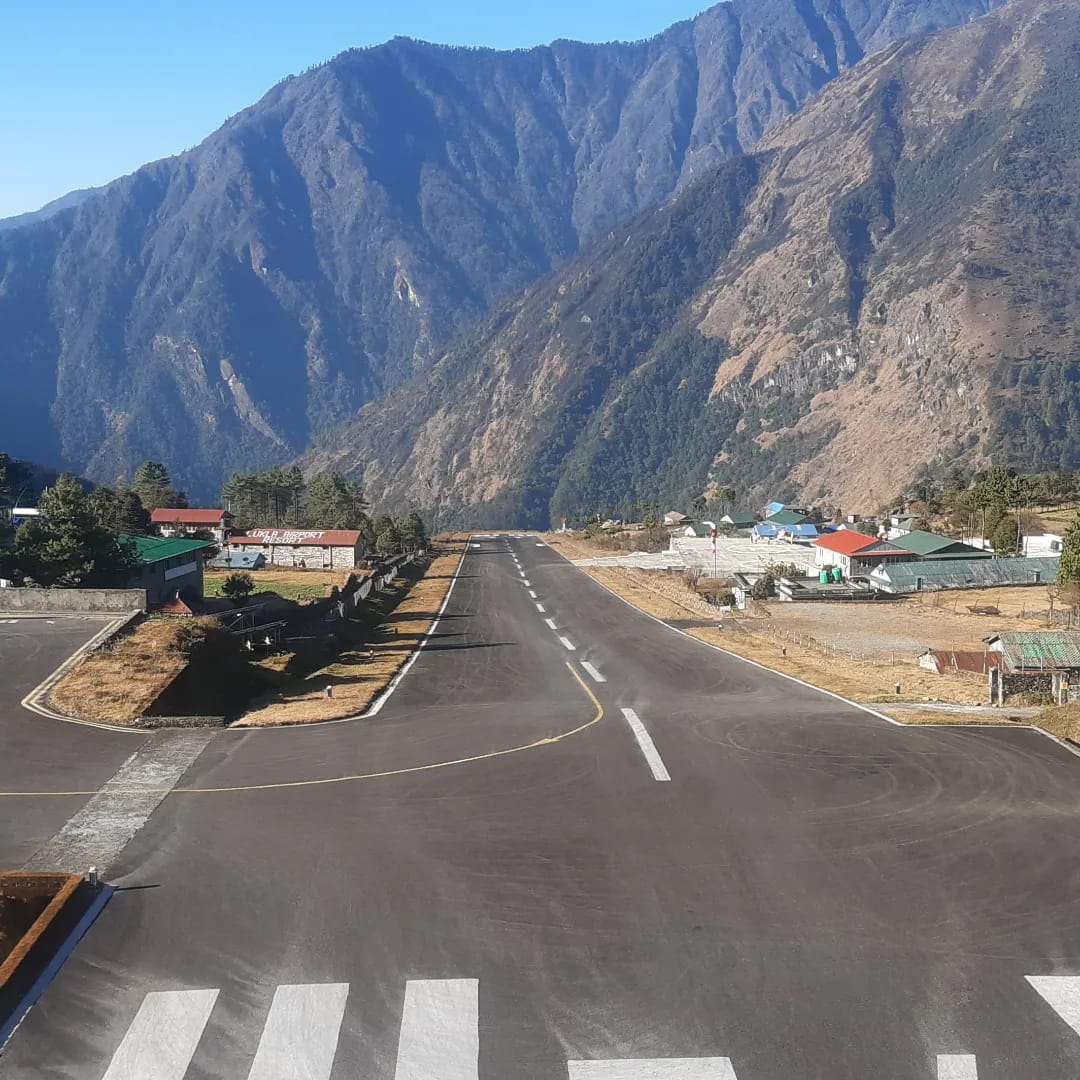
Today the airport sees dozens of take-offs and landings daily. People are goods have come to rely on this entrance into the Everest Region and ultimately to Mt. Everest.
But what makes it so dangerous? Lying at 9,337 ft / 2,846 m, it is not the highest airport in the world. That accolade goes to Daocheng Yading Airport in Tibet at almost twice the height.
But what makes the airport at Lukla so unique is its close proximity to the mountains, its narrow approach path with a steep incline, and its very short runway—combined with weather that can change at a drop of a hat. High winds and low-lying clouds can reduce visibility in an instant, causing delays and cancellations on a regular basis. With such changeable weather, the safest time to fly is in the morning. Demand is such that flights keep running until the afternoon during the busy seasons. There are no flights at night.
However, this small airport, more of an airstrip with only one runway, is extremely busy and well-known in hiking and climbing circles.
Lukla is a gateway to Everest Base Camp Trek
Lukla Airport Facts
- Elevation: 2845 m | 9334 ft
- Runway: Asphalt paved
- Runway length: 527 m | 1729 ft
- Runway width: 30 m | 98 ft
- Gradient: 11.7 %
- Air traffic service: Aerodrome Flight Information Service
- Flight time: 6:30 am to 3:00 pm
- Number of flights per day: 50+
Most flights in Lukla are passenger planes bringing trekkers to the area. There are limited flights for cargo. All flights into Lukla come from Kathmandu and are operated by:
- Summit Air
- Nepal Air
- Simrik Air
- Tara Air
- Sita Air.
There is space for only four short takeoff and landing twin otter planes at any given time. Plus, a couple of helicopters are located in a different location, 140 meters north of the control tower.
Lukla Airport – No room for error
| Date | Airlines | Call Sign | Fatality |
| 1973-10-15 | Royal Nepal Airlines | 9N ABG | 0 |
| 1991-06-09 | Royal Nepal Airlines | 9N ABA | 0 |
| 1992-09-26 | Royal Nepal Airlines | 9N ACI | 0 |
| 2004-05-25 | Yeti Airlines | 9N AFD | 3 |
| 2004-10-01 | Sita Airlines | 9N AHD | 0 |
| 2008-10-08 | Yeti Airlines | 9N AFE | 18 |
| 2010-10-12 | Sita Airlines | 9N AHB | 0 |
| 2013-09-26 | Air Dynasty Helicopter | 9N AEX | 0 |
| 2017-05-27 | Summit Airlines | 9N AKY | 2 |
All these airlines operate twin otter propeller planes as the area is unsuitable for jet engine planes. Pilots are well used to flying in these mountainous conditions and with these kinds of planes.
There is a helicopter landing pad 140 meters north of the control tower, which is utilized by an ever-growing demand for helicopter tours and emergency services.
Getting to Lukla by Air
In order to cater to the high number of flights in and out and free up space in Kathmandu on its own limited tarmac, flights to Lukla now depart from Ramchhap in the eastern Terai area of the country. This means a road journey of xx hours, departing Kathmandu around 1 or 2 am to make it to Ramchhap for early morning flights.
This brings its own difficulties as currently there is very limited accommodation at Ramchhap for use in case of flight delays. It also requires a rather uncomfortable night on the road before the first day of trekking. Helicopter trips to Lukla are now possible, drastically reducing the hours spent traveling from Kathmandu to Lukla.
Flight Cancellation
As mentioned, the weather is an important factor when flying into high-altitude mountain settings. Cancellations and postponements are frequent. Lukla can often get very busy if there is a few days of bad weather. Perhaps it adds to the adventure. However, missing an international flight is never fun, so we recommend that trekkers build in some days at the end of their trek and not have an international flight too soon after the scheduled Lukla to Kathmandu flight. If your flight is on time, you can spend some more days in Kathmandu relaxing or shopping, but if you are delayed, you will not miss your international flight by building in extra time!
Safety Net
In case of long delays (it has been known for bad weather to close in and delay flights for up to 10 days), there is the option of chartering a helicopter from Lukla. This is an expensive option of between USD 2,000 and 2,500 for a five-seater helicopter. And demand will be high for helicopter seats at that time. However, if your flight is cancelled, you can claim back 100% of the money from the airline you made your booking with.
